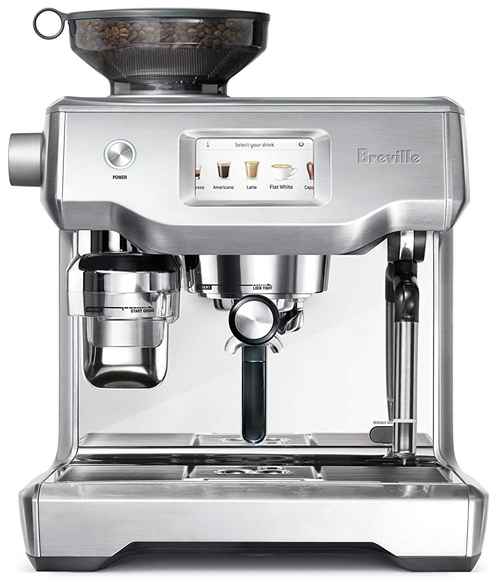Espresso Latte Recipe [+Tips]
Note: This page contains affiliate links.
As an Amazon Associate, I earn from qualifying purchases when you click on the link, but you are not charged extra.
Ah, the espresso latte-equal parts bold espresso and silky steamed milk, all wrapped up in a warm, aromatic hug. It’s the coffee shop classic that somehow always feels both energizing and indulgent.
- Old World Christmas Beans: Tastes like the holidays in every cup — discover the cozy magic of Old World Christmas Beans before the season slips away.
- Kirkland Sumatra French Roast : Dark, bold, and wildly smooth—why Kirkland’s Sumatra French Roast is the best-kept secret of serious coffee drinkers.
- Hot Fudge Whole Bean Coffee : What happens when dessert meets coffee? Meet the decadent whole bean that tastes like hot fudge—but better.
- Aroma Ridge Guatemala Antigua Medium Roast : From the highlands of Guatemala to your morning mug—this rich, balanced roast is waking up coffee lovers everywhere.
- Juan Valdez Cumbre Colombian Coffee : Crafted by Colombia’s most iconic coffee legend—why Cumbre is a must-try for fans of bold, authentic flavor.
But here’s the thing: you don’t need to spend $6 at your local café every time you crave that velvety goodness. Making an espresso latte at home is easier than you think-and way more satisfying. Plus, when you make it yourself, you control everything from the beans to the temperature to that perfect milk froth that feels like a cloud.
Let’s break down the magic behind this glorious drink and how you can make your kitchen your new favorite coffee shop.
- 1 Ingredients For Espresso Latte Recipe
- 2 How To Make Espresso Latte?
- 3 Expert Tips: Brewing Like A Boss
- 4 Recipe Variations: Latte Your Way
- 5 Final Words: Coffee Made Personal
- 6 FAQs
- 6.1 What Is An Espresso Latte?
- 6.2 How Do You Make An Espresso Latte At Home?
- 6.3 Can I Use Non-dairy Milk For An Espresso Latte?
- 6.4 What Is The Difference Between A Latte And A Cappuccino?
- 6.5 How Much Espresso Is Needed For An Espresso Latte?
- 6.6 What Type Of Coffee Beans Are Best For Making An Espresso Latte?
- 6.7 Can I Make A Latte Without An Espresso Machine?
- 6.8 How Can I Make A Flavored Espresso Latte?
- 6.9 What Is The Proper Temperature For Steamed Milk In An Espresso Latte?
- 6.10 How Do I Create Latte Art With My Espresso Latte?
Ingredients For Espresso Latte Recipe
Before we start foaming and frothing, let’s take a good look at what you’ll need. Simplicity is key here, and you might already have most of these goodies at home.
Basic Ingredients
-
2 shots of espresso (about 2 oz total)
→ Freshly pulled if you have a machine, or brewed strong if you’re improvising.
-
6 Oz Of Milk
→ Whole milk makes for the creamiest texture, but you can absolutely use dairy-free options.
-
Sweetener (optional)
→ Think sugar, honey, agave, or flavored syrups like vanilla or caramel.
️ Optional Tools (but They Seriously Level Things Up)
- Espresso machine – The gold standard.
- Milk frother or steam wand – For that barista-level froth.
- French press – A fantastic milk frother alternative!
- Stovetop or microwave – To heat the milk if you’re going old-school.
- Coffee grinder – Fresh beans = flavor explosion.
How To Make Espresso Latte?
Alright, the fun part! Let’s break down the steps to create your dream cup of espresso latte, step-by-step. No confusing jargon-just real, approachable instruction.
Step-by-Step Directions
-
Start With The Espresso.
- Use freshly ground coffee beans if possible-medium to dark roast is best for lattes.
- Pull 2 shots of espresso (or brew 2 oz of very strong coffee if you don’t have a machine).
- Pour it into your favorite mug. The foundation is laid.
-
Heat The Milk.
- Warm 6 oz of milk until it’s steaming but not boiling (around 150°F / 65°C).
- Use a saucepan or microwave (about 45 seconds should do it).
-
Froth The Milk.
- If you have a steam wand: insert just below the surface and move in a circular motion.
- With a French press: pump vigorously 15-20 times.
- Handheld frother? Go wild. Just aim for that smooth, velvety texture.
-
Pour It Like A Pro.
- Slowly add the steamed milk to your espresso, holding back the foam with a spoon.
- Then spoon that luscious foam on top. Hello, latte art canvas.
-
Sweeten (if You Like).
- Add your sugar or syrup to the espresso before pouring in the milk for best mixing.
- Sip, smile, and bask in your barista brilliance.
Expert Tips: Brewing Like A Boss
Let’s take your espresso latte from good to life-changing. Here’s some insider info and tiny tweaks that make a big difference:
- Use fresh beans – Seriously, the flavor difference is massive.
- Preheat your cup – Keeps your drink warm longer and gives it that professional feel.
- Experiment with ratios – Prefer a stronger coffee flavor? Try a 1:2 espresso to milk ratio.
- Practice milk texture – Aim for ’microfoam’ (tiny, velvety bubbles), not big frothy ones.
- Keep it clean – A well-maintained machine = consistently great flavor.
- Chill your milk frothing tools – Cold frothing pitchers can improve foam texture.
Recipe Variations: Latte Your Way
Lattes are the blank canvas of the coffee world-so versatile, so personal. Here are some delicious twists to try:
Dairy-Free Delights
- Oat milk – Naturally sweet, creamy, and perfect for frothing.
- Almond milk – Nutty and light, with a slightly toasted flavor.
- Soy milk – Classic, with great texture and neutral taste.
Flavored Fun
- Vanilla Latte – Add a splash of vanilla syrup for that iconic sweet touch.
- Caramel Latte – A drizzle of caramel in your cup and on top = dessert in a mug.
- Pumpkin Spice Latte – Blend pumpkin puree, pumpkin spice, and a hint of maple syrup into the milk.
Rich & Indulgent
- Mocha Latte – Add a spoonful of cocoa powder or chocolate syrup to your espresso.
- Cinnamon Honey Latte – Stir in cinnamon and honey for cozy, warm vibes.
Iced Latte Version
- Use cold milk and espresso over ice.
- Froth cold milk for texture if you like, or shake it all up in a cocktail shaker!
Final Words: Coffee Made Personal
Here’s the thing: an espresso latte isn’t just a drink. It’s a ritual, a little moment of calm, a reward, or a pick-me-up-whatever you need it to be. And making it yourself means you get to craft it exactly how you want. Too strong? Dial it down. Not frothy enough? Froth longer. Want it extra sweet and topped with cinnamon? Go for it!
The real joy is in the customization. You’re not following rules here-you’re creating your own delicious rhythm.
FAQs
What Is An Espresso Latte?
An espresso latte is a coffee drink made with a shot of espresso, steamed milk, and a small amount of milk foam on top. The ratio typically consists of one part espresso to two parts steamed milk, creating a creamy and smooth coffee experience.
How Do You Make An Espresso Latte At Home?
To make an espresso latte at home, brew one shot of espresso using an espresso machine or a stovetop moka pot. Then, steam milk (preferably whole milk for creaminess) until it reaches 150-160°F (65-70°C). Pour the espresso into a cup, add the steamed milk, and top with a small amount of foam.
Can I Use Non-dairy Milk For An Espresso Latte?
Yes, you can use non-dairy milk such as almond milk, oat milk, or soy milk. Oat milk is particularly popular because of its creamy texture, which mimics the consistency of dairy milk. Be sure to steam the non-dairy milk properly to achieve the desired froth.
What Is The Difference Between A Latte And A Cappuccino?
The main difference between a latte and a cappuccino lies in the milk-to-espresso ratio and the texture of the foam. A latte has more steamed milk and a small amount of foam, while a cappuccino has equal parts of espresso, steamed milk, and foam, with a more frothy and airy texture.
How Much Espresso Is Needed For An Espresso Latte?
Typically, one shot (1 ounce or 30 ml) of espresso is used for a standard espresso latte. If you prefer a stronger coffee flavor, you can add an additional shot of espresso.
What Type Of Coffee Beans Are Best For Making An Espresso Latte?
Espresso beans are generally darker roasted beans, which are ideal for making espresso. Beans labeled as ’Espresso’ or ’Espresso Roast’ are designed for espresso machines. However, any dark roast coffee bean can be used as long as it’s ground finely enough for an espresso machine.
Can I Make A Latte Without An Espresso Machine?
Yes, you can make a latte without an espresso machine. Use a stovetop moka pot or an AeroPress to brew concentrated coffee that mimics the strength of espresso. Then, steam milk using a milk frother or even a French press by pumping it rapidly to create froth.
How Can I Make A Flavored Espresso Latte?
To make a flavored espresso latte, you can add syrups such as vanilla, caramel, or hazelnut to the espresso before adding steamed milk. You can also experiment with spices like cinnamon or nutmeg, either in the espresso or sprinkled on top of the foam.
What Is The Proper Temperature For Steamed Milk In An Espresso Latte?
The ideal temperature for steamed milk in an espresso latte is between 150°F and 160°F (65°C to 70°C). This temperature allows for optimal sweetness and texture without scalding the milk. Milk should not exceed 170°F (77°C), as it may lose its creamy texture and taste burnt.
How Do I Create Latte Art With My Espresso Latte?
To create latte art, you need to steam the milk to a silky, smooth texture with microfoam. After brewing the espresso, pour the steamed milk into the espresso slowly, starting from the center and moving outward, then use a swift motion to create a heart, rosette, or other designs. Practice and precision with pouring are key.

